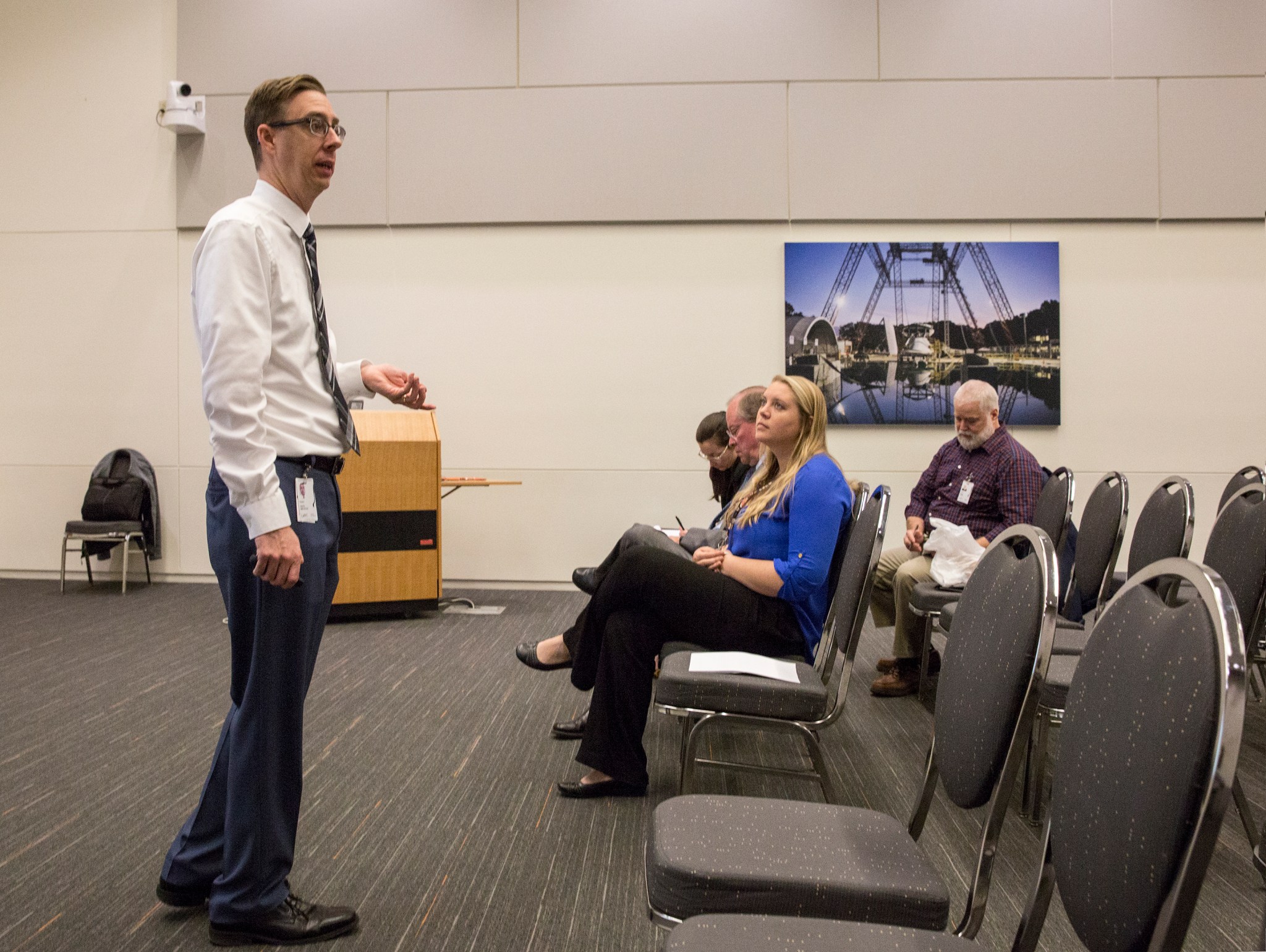As rising sea levels encroach on coastal communities across the country, the city of Hampton, Virginia, has not been spared. Quite the opposite – it’s in one of the most threatened areas of the U.S. thanks to being just a sandy step away from the Atlantic Ocean and Chesapeake Bay.
And like many municipalities, Hampton is preparing to weather the incoming tide.
How Bad is It?
Global sea-level rise is accelerating and could be 26 inches higher by 2100, according to a new study based on 25 years of NASA and European satellite data. Hampton already was prone to flooding because of its proximity to the sea. In recent years, however, the city has seen new areas impacted due to seal-level rise from climate change, and expects there’s more to come.
Hampton officials visited NASA’s Langley Research Center recently to update their progress. More than a dozen employees attended the discussion at the Reid Center.
“We’re really trying to do this before the storm,” said David Imburgia, Hampton’s environmental and sustainability manager. “It’s very difficult to have these conversations with your community in distress or displaced.”
Along with other agencies, NASA plays a role helping Hampton and other coastal communities prepare for what lies ahead.
“With the Atmospheric Science Data Center, LaRC (Langley) is responsible for processing, archiving, and distributing NASA Earth science data about radiation, clouds, aerosols, and tropospheric compositions,” according to the report. “This uniquely situates NASA Langley as a research partner for the City of Hampton, helping study climate data that could inform critical infrastructure decisions.”
Hampton completed the first phase of its “coastal resilience” initiative in January. The effort culminated in a report available at Resilient Hampton that offers a look at progress made and what needs to be done next.
“We think Hampton is a pretty great place,” Imburgia said. “We really want to dive into our strengths and how can we make sure our assets are working for us.”
Hampton is surrounded by water and tidal influences extend deep into the city, Imburgia said. That’s why it’s imperative for city officials to address water-related issues and events before it’s too late.
“We don’t want the national story of Hampton to be, ‘This place floods’,” he said. “We’ve got to figure out a way to fix this.”
Eric Gillard
NASA Langley Research Center




























